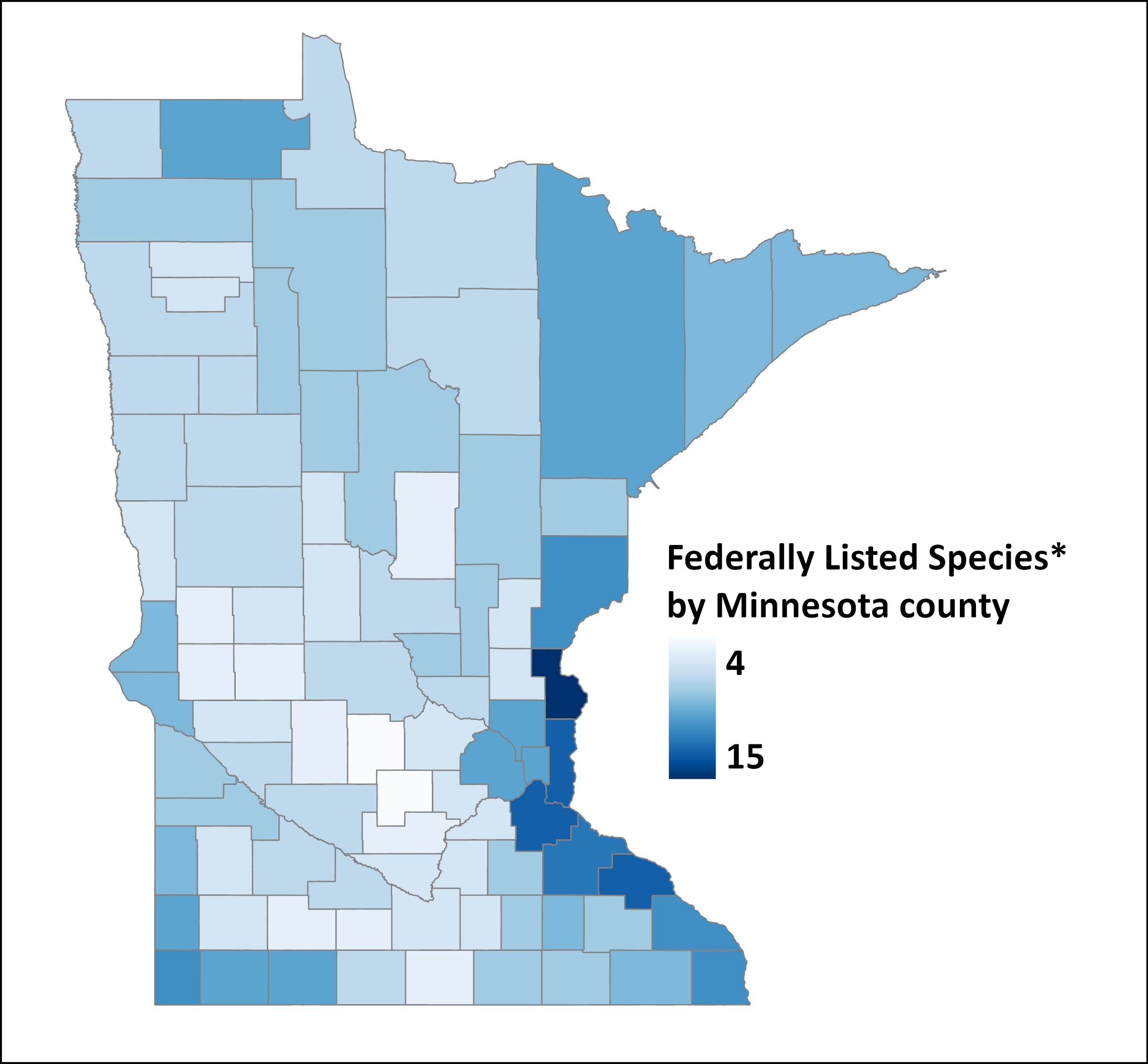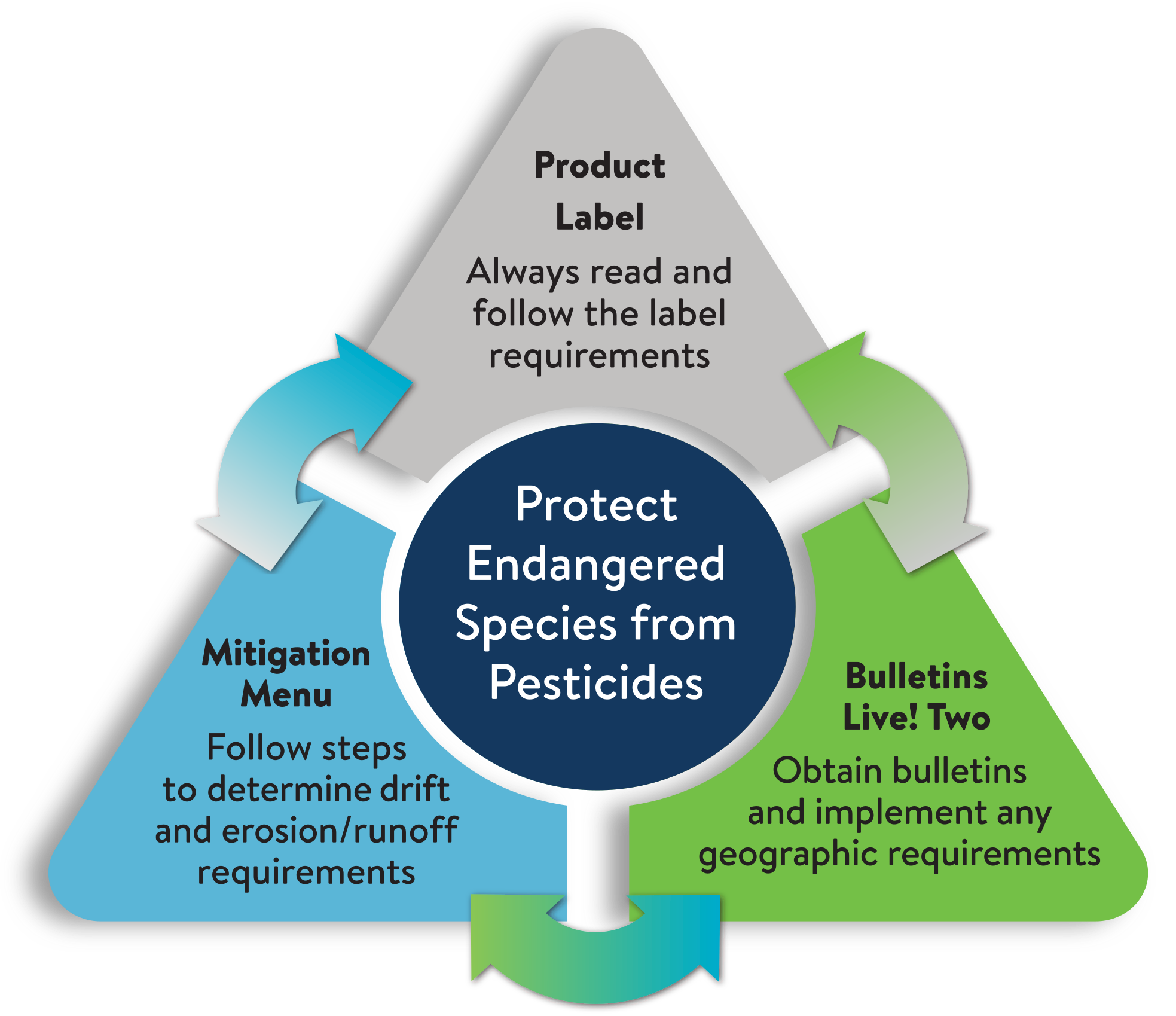The Endangered Species Act (ESA) is a federal law that establishes protections for fish, wildlife, and plants that are listed as threatened or endangered. For more information, please visit the U.S. Fish & Wildlife Service's page on the Endangered Species Act.
Applicators can expect to see three new sections on pesticide labels based on ESA requirements. It is recommended that applicators document all actions taken to comply with these new requirements.

1. Mandatory Spray Drift Management
Products with ESA label language will contain new drift mitigation requirements and downwind buffers based on the product's potential for population-level impacts. The label will require applicators to visit the EPA Mitigation Menu website to determine if a site requires drift mitigation. A picklist of options to reduce the label specified buffer requirements is available if certain criteria are met or implemented. Not all buffer requirements on labels are for ESA drift mitigation. Please follow the label for determining if and when buffer reductions are applicable. Find more information on the MDA's Drift Mitigation page.
2. Mandatory Runoff Mitigation
To address potential population-level impacts due to pesticide exposures from erosion and runoff, the EPA will require applicators to visit the EPA Mitigation Menu website. This website provides steps to determine if a site requires mitigation, and a picklist to achieve the label specified point requirements. Find more information on the MDA's Drift Mitigation page.
3. Endangered, Threatened Species Protection Requirements
Product labels with this section will require applicators to check Bulletins Live! Two (BLT) prior to using the product. Applicators will need to use the BLT website to determine if there are any Pesticide Use Limitation Areas (PULAs) in place, and if so, obtain the Endangered Species Bulletin and implement the restrictions from the Bulletin before using the product. Find more information on the MDA's Bulletins Live! Two page.
Applicators using pesticides with new ESA label language must ensure all requirements are met before making an application. Applicators may need to work with farm owners/mangers in cases where land management practices are required to meet mitigation points.

Background on EPA Actions
Because of requirements in the ESA, the EPA is developing multichemical, multispecies strategies to expedite protections for threatened and endangered species. You can find more information about how the EPA is Assessing Pesticides under the Endangered Species Act on their website. Find more information on completed and draft strategies:
- Herbicide Strategy - Final Released August 20, 2024
- Insecticide Strategy - Final Released April 29, 2024
Fungicide Strategy - To be determined
Rodenticide Strategy - Final Biological Evaluations and Strategy Released November 22, 2024, Interim Decisions on 11 Active Ingredients 2025
Vulnerable Species Action Plan - Final Released September 26, 2024
The Strategies
Historically, the EPA has taken the approach of performing ecological risk assessments and biological evaluations to assess the impacts of a pesticide on listed species. The strategies above take a new approach to alleviate the limitation of their historical process.
The Goals
Identify mitigations for listed species likely impacted at the population-level by the agricultural use of conventional pesticides.
Consider mitigations that would reduce major routes of pesticide exposure to listed species.
Improve the efficiency of future ESA consultations on conventional pesticides including, where appropriate, applying the final strategy to future registration and registration review actions.
Increase regulatory certainty for growers and other stakeholders regarding the use and availability of conventional pesticides.
To accomplish these goals, the EPA has developed a three-step framework for implementing these strategies. Step 1 had EPA identify the potential for population-level impacts resulting in a rating system for pesticide products of none, low, medium, and high. Step 2 identified mitigations that would result in lowering population-level impacts. Drift and runoff/erosion mitigations were identified as most likely to have the largest impacts. Step 3 was to identify geographically important areas such as critical habitat. Last Updated: 7/17/2025

